The Dirty work of time: An Iron Heart in Ruins
They call it the "Reichsbahn Repair Shop," and it's one of the most impressive remnants of Germany's great industrial Gründerzeit era. In the heart of East Germany, once a center of Europe's economic development, gigantic abandoned halls are now haunted only by the ghosts of the dead past.
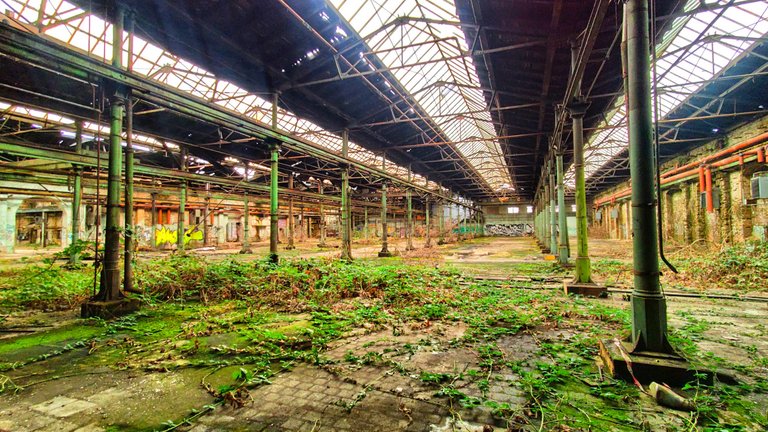 Mother nature is coming back inside the giant halls
Mother nature is coming back inside the giant halls
At six in the morning, the night always ended here. An endless procession of dark figures pushed through the dawn that dawned over the eastern part of the German industrial city of Halle. Between brick walls and smoking chimneys, the air smelled of welding torches, hot oil, and cold smoke.
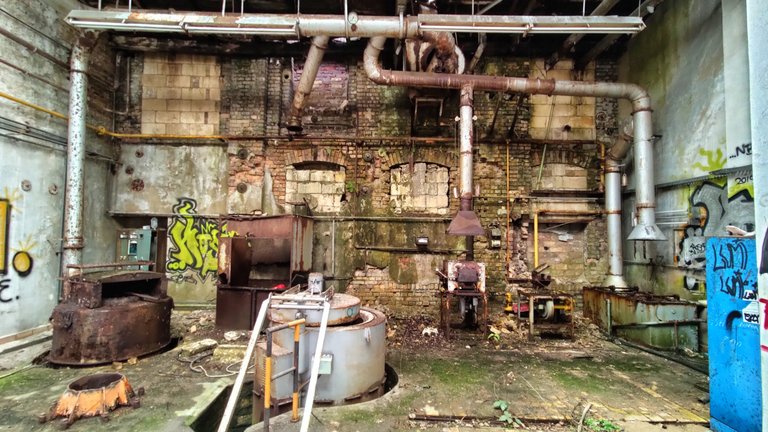 Something rusty
Something rusty
One last cigarette
Behind the large doors of the enormous halls, cranes started up, men stood at workbenches, smoking. One last cigarette before their hands got dirty again and the battle with old steel and new rust began.
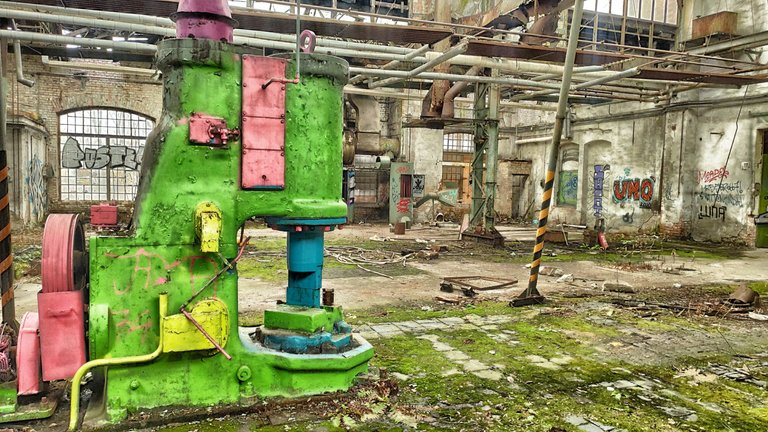 A forgotten machine
A forgotten machine
For 100 years, the iron heart of this city on the Saale River, with more than 220,000 inhabitants, beat in the Reichsbahn Repair Shop (RAW) behind Halle's main train station. Today, the shop is one of the largest lost sites of East Germany's industrial past: Formerly named after the communist labor leader Ernst Thälmann, the massive ruin is an imposing "lost place" – a monument to industrial culture, a witness to a past inexorably sinking into the dust of time.
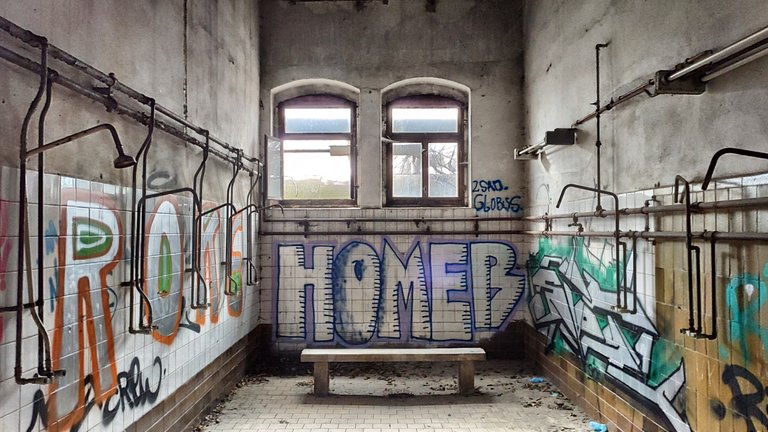 The bathroom of the workers
The bathroom of the workers
It was a monster
It was a monster that swallowed thousands of workers every day, who had to maintain and repair locomotives in its workshops, warehouses, and football-field-sized factory halls. Named after the old German Reichsbahn (German Reich Railway) from the pre-socialist GDR era, the so-called People's Own Enterprise was one of the largest companies in the country for decades. Today, it is a realm of ghosts and spirits.
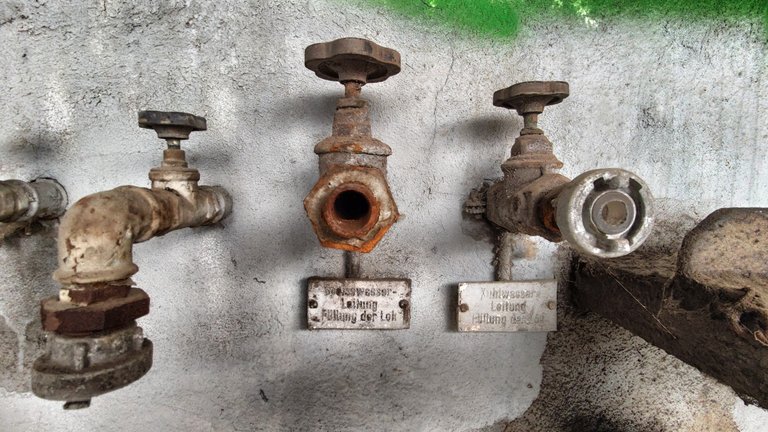 Water pipelines, dry since 30 years
Water pipelines, dry since 30 years
Unknown individuals have painted the machines. The paths in the RAW, once walked by thousands, seem like Sleeping Beauty's castle. At that time, 2,000 people worked on the seemingly endless area, covering more than 30,000 square meters, mostly in gloomy, oily halls where hammers roar, puddles of oil slosh, and men in gray-washed overalls screw, saw, and hammer on locomotives.
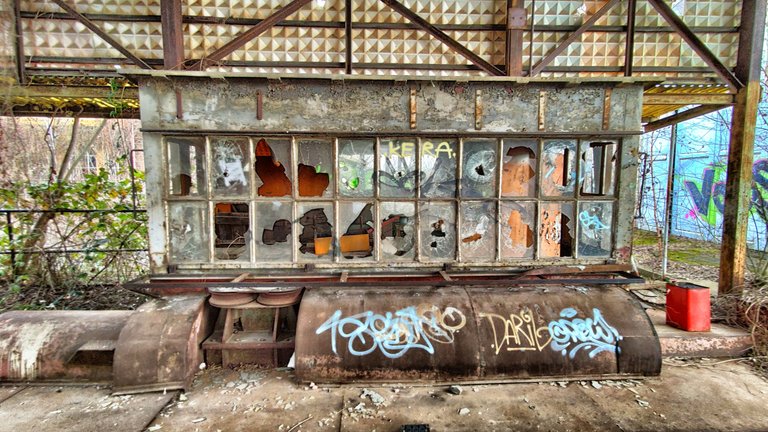 A former gasoline station
A former gasoline station
A dark tunnel
Students who, during their school years, were required to complete their "productive labor" lessons in the monster between the tracks – accessible only through a dark tunnel – gained an unforgettable impression of the socialist economy here. Dreaming of becoming a metalworker or lathe operator afterward was tantamount to an accident victim wishing to have another accident as soon as possible.
 All the painting are ready to go
All the painting are ready to go
But when the Royal Prussian State Railway built the massive complex starting in 1860, it was all modern – not a repair shop, but a mobility factory. As part of an entire network of repair shops, the RAW (Repair Shop) in Halle kept Germany running through two world wars and four system changes.
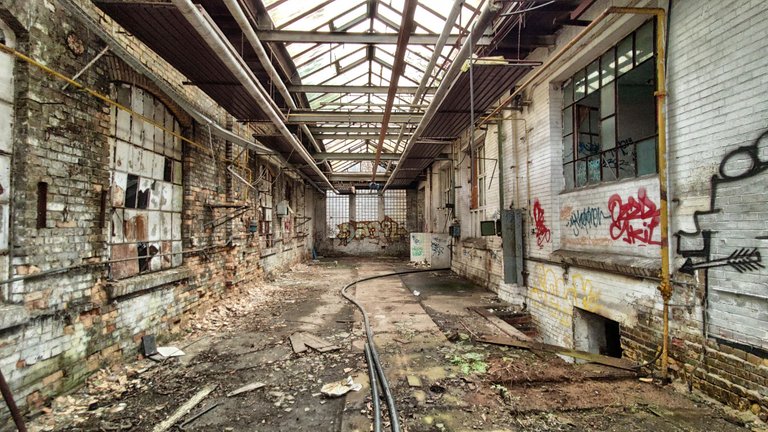 A "smaller" room
A "smaller" room
Beer drunk during work
Until the 1990s, the work processes at the facility, built in 1910 by the Royal Prussian State Railway, had remained unchanged. More than a dozen halls and countless outbuildings housing administrative staff transformed the factory, located in the heart of the city, into a veritable labyrinth for the uninitiated. Shunting locomotives and light rail cars arrived and were repaired; the 2,000 workers welded, soldered, forged, and sawed on oversized gears, pressure vessels, and the locomotives' steel wheels.
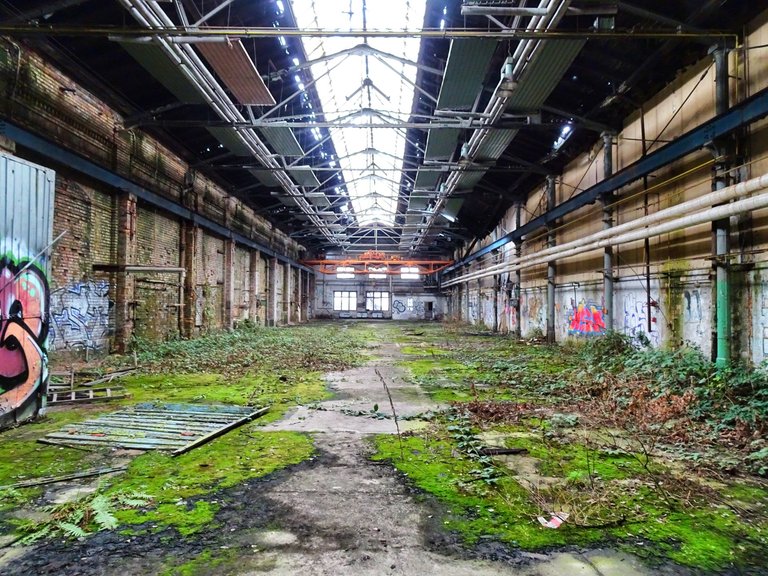 One of the middle sized halls
One of the middle sized halls
A bottle of alcohol sat at almost every workstation, beer was drunk during work, and almost everyone smoked. The machines powered by steam boilers and transmission belts disappeared. The locomotive types that were refurbished bore new names. But the processes have remained similar, and the work is just as dirty.
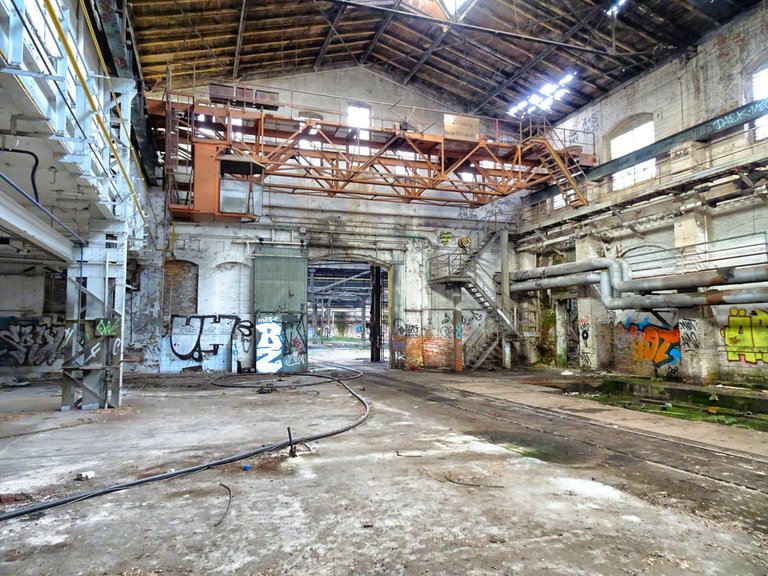 Everywhere are cranes to catch part of the locomotives
Everywhere are cranes to catch part of the locomotives
The End of everything
The end came in the mid-1990s. All the factory halls were shut down, the metalworkers, welders, and administrative staff lost their jobs, the huge halls were boarded up, and the ravages of time took over. Trees grew, hedges sprouted from the earth, some halls were demolished, and in the ten remaining ones, moss and grass grew from the poisoned soil.
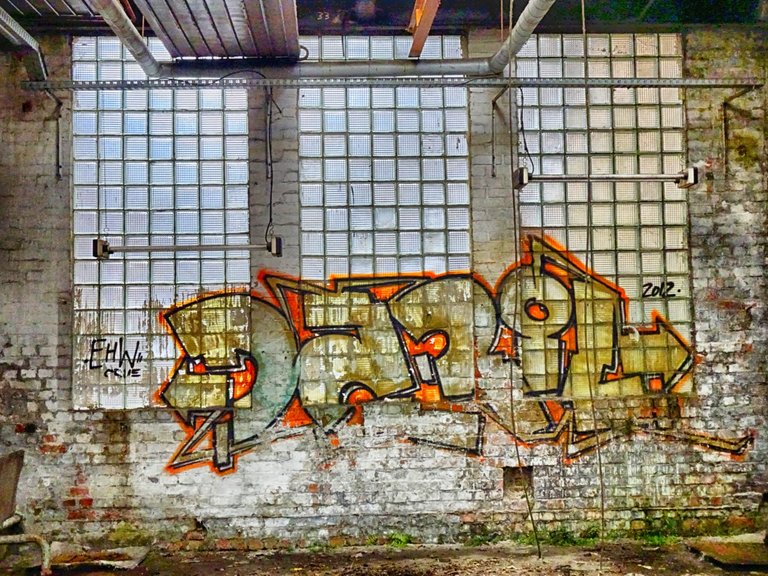 The ruins are now a gallery of paintings
The ruins are now a gallery of paintings
Young artists eventually discovered the site and began using it as a studio. Today, graffiti can be found everywhere on the towering walls. Even some remaining machines, too large to be hijacked and monetized by illegal scrappers, have been brightly painted. It was once the iron heart of the city, a huge enterprise with thousands of workers who repaired and maintained locomotives.
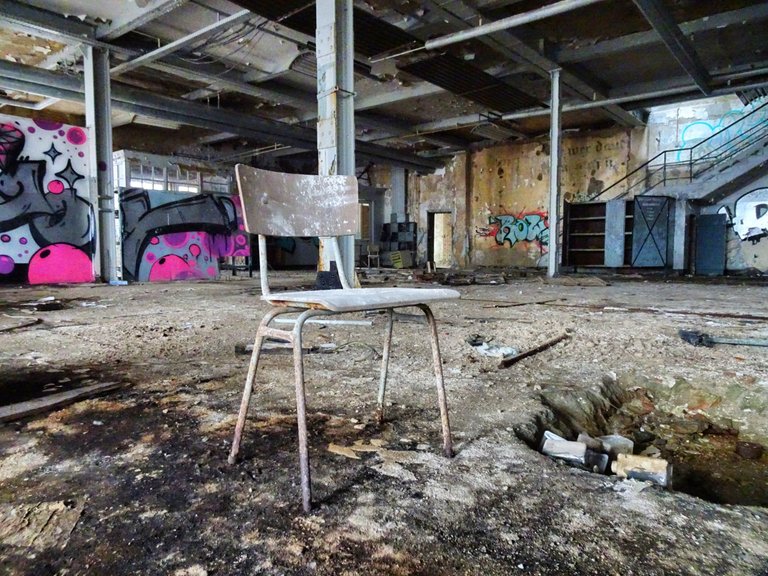 Forgotten chair
Forgotten chair
A labyrinth for outsiders
More than a dozen halls and countless outbuildings housing the administrative staff make the factory a labyrinth for the uninitiated. Shunting locomotives drive in and out, the brigades of the various departments solder, forge and weldon pressure vessels and steel wheels.
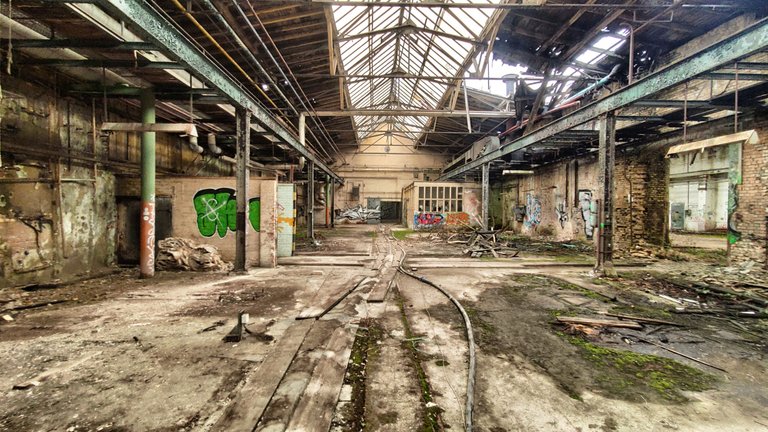 You can stroll around the buildings for days
You can stroll around the buildings for days
For decades, used oil, trichloroethylene, benzene, and hydrogen fluoride have been seeping unhindered into the ground. To this day, the owner, a federally owned company called the Federal Railway Assets, has to clean the groundwater, which gradually washes away the sins of the past.
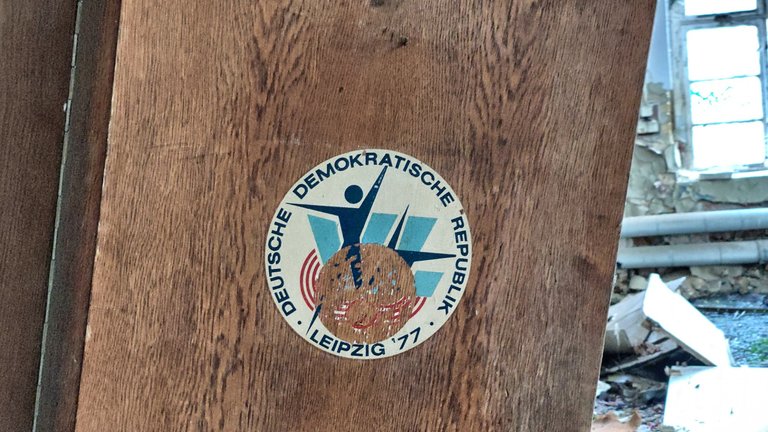 A sign from nearly 50 years ago
A sign from nearly 50 years ago
All is closed
The RAW came to an end shortly before the turn of the millennium. All factory buildings were closed. Metalworkers, welders, and administrative staff lost their jobs. Since then, decay has taken over. Trees grow in the halls, hedges break out of the earth, moss grows rampantly on the poisoned soil.
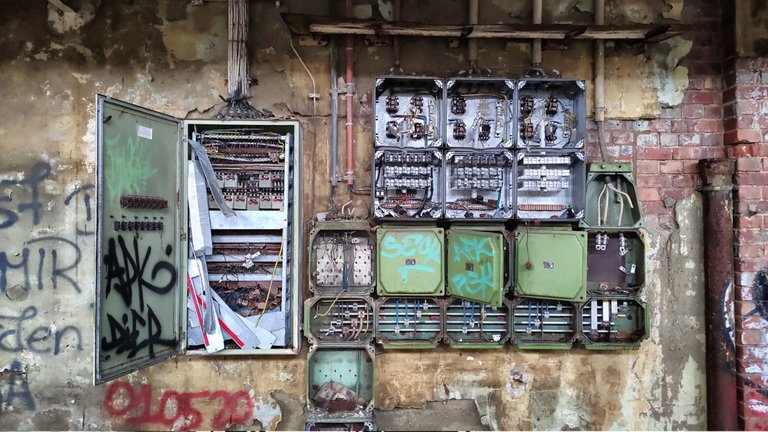 There is no more energy
There is no more energy
After the scrap collectors came young graffiti artists who use the seemingly enchanted place as an illegal studio. Graffiti can be found everywhere on the walls today. Even some remaining lathes, too large to be turned into cash by the scrap hunters, have been brightly painted.
The dead iron heart
But a quarter of a century after the demise of the iron heart, the traces of decay are unmistakable. The walls are crumbling, the glass roofs have holes in them, and floors have collapsed several meters below. The former splendor of the brick buildings can only be guessed at, standing silently beside their own graves like ghosts of a forgotten era.
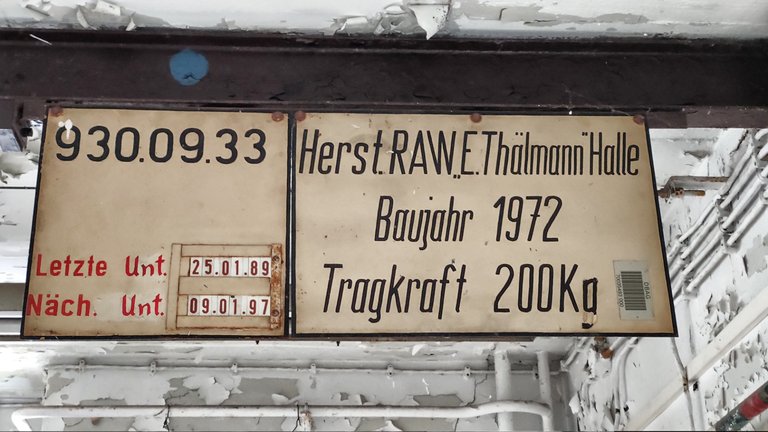 The last inspection was 1989
The last inspection was 1989
Birds fly over the rare visitors, water drips from the roof. Someone has left a lonely chair in one of the halls; in another, there are newspapers, pay slips, and sex catalogs from the time of reunification.
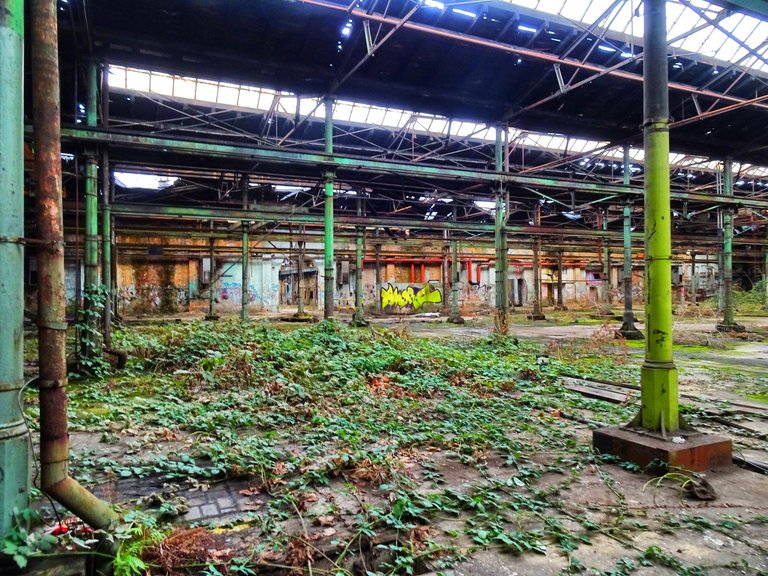 Seems like an indoor plantation
Seems like an indoor plantation
The site planners, who have big plans for the future, call it a "potential area." One day, a mini-Silicon Valley will emerge here, combining modern workplaces and modern living in a completely new district. The huge ruins will then disappear as if they had never existed...
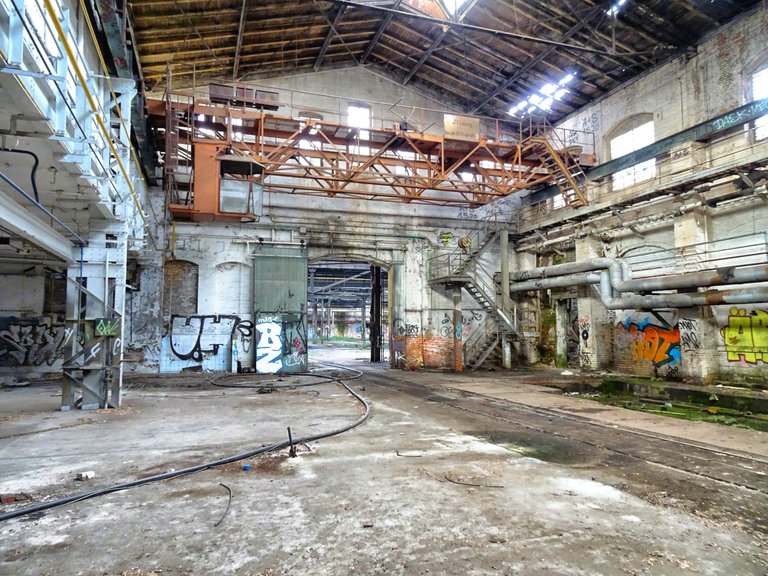 Ready for the next room?
Ready for the next room?
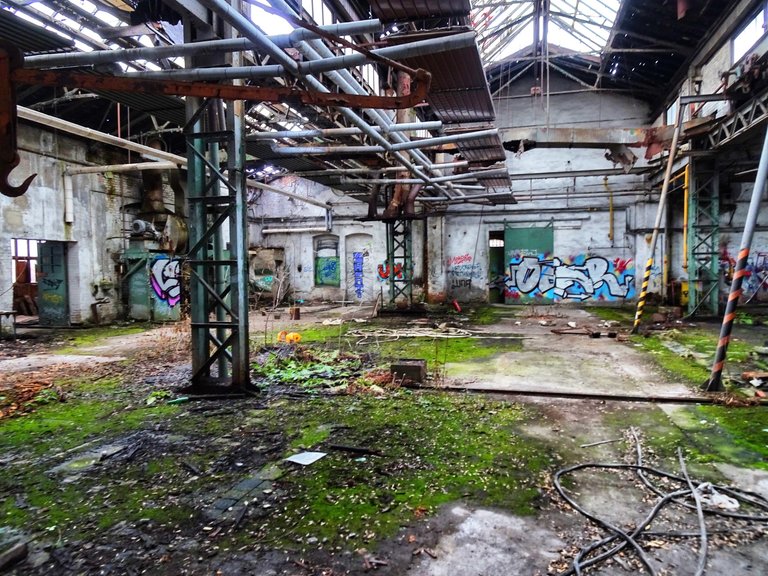 It's the same one, but different
It's the same one, but different
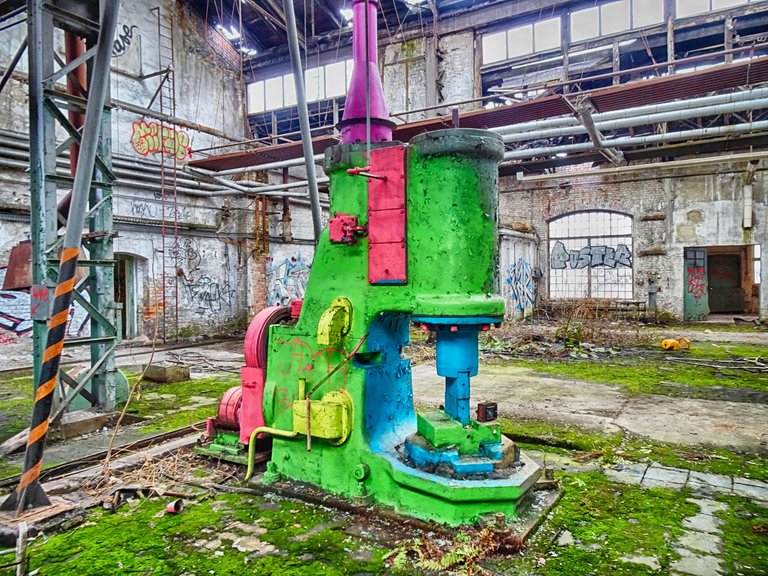 Artists are painting the machines years after the death of the plant
Artists are painting the machines years after the death of the plant
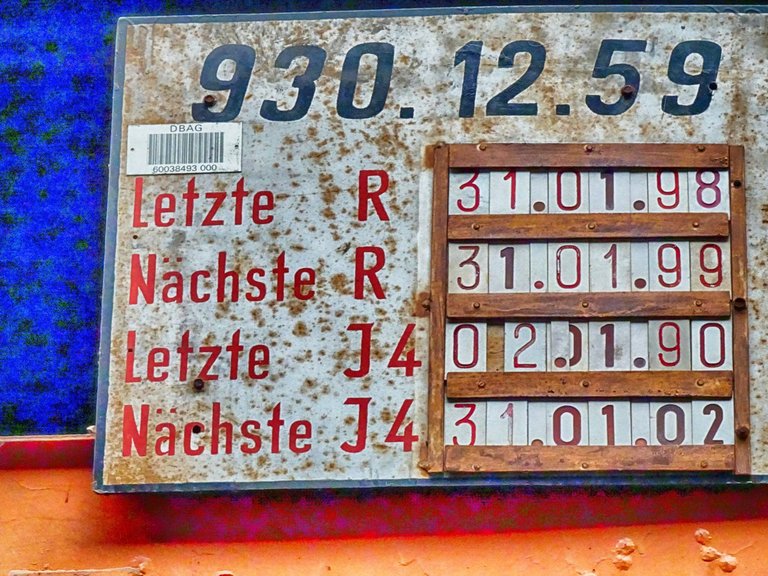
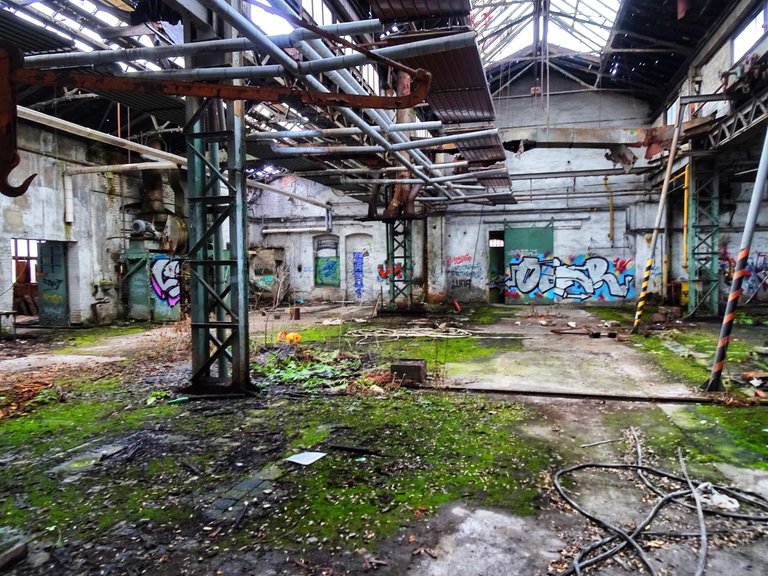
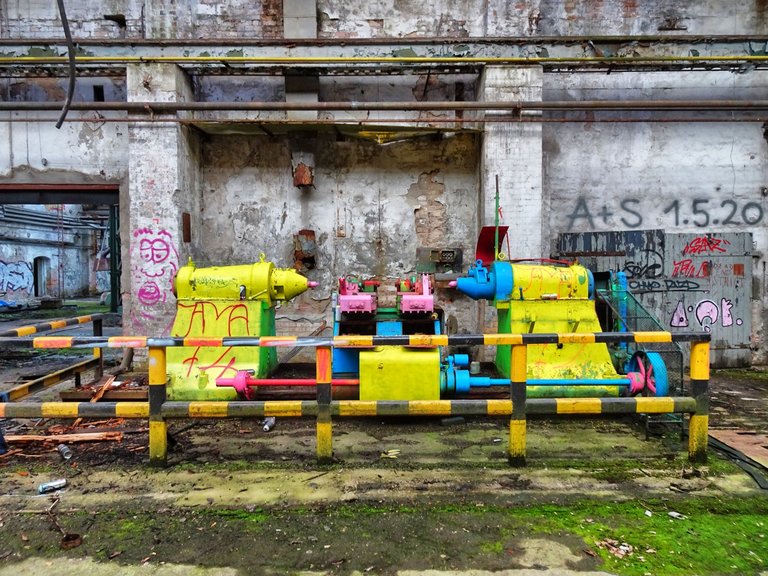
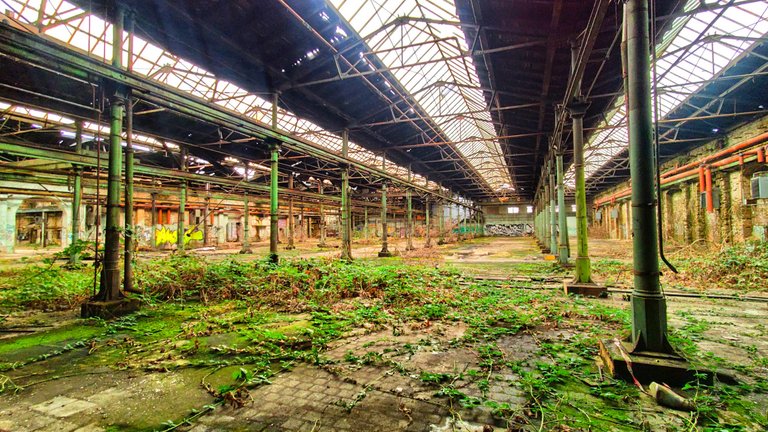
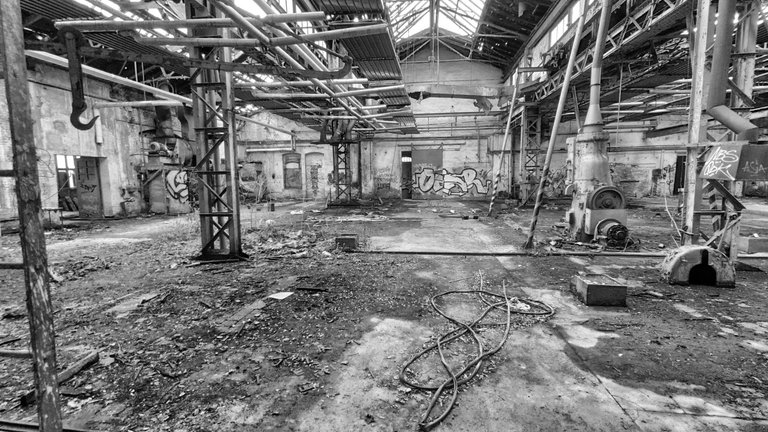
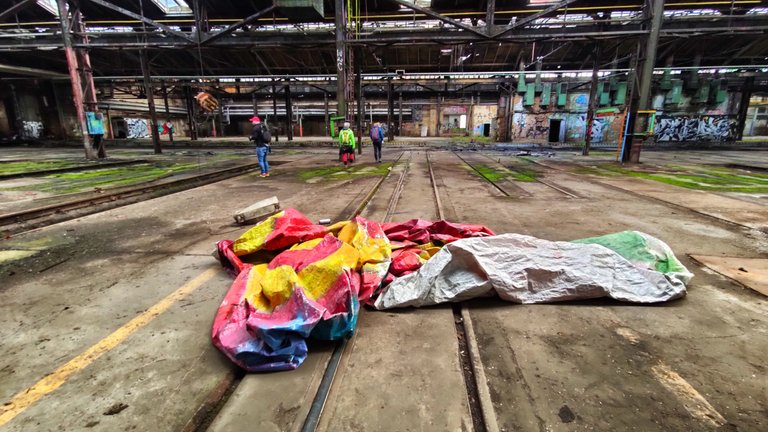
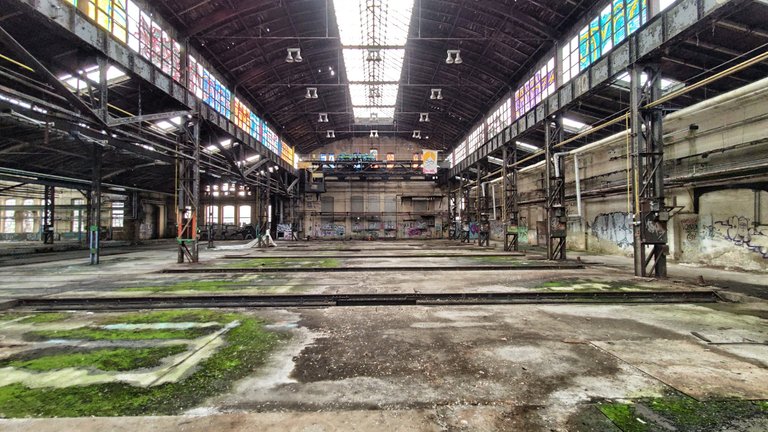
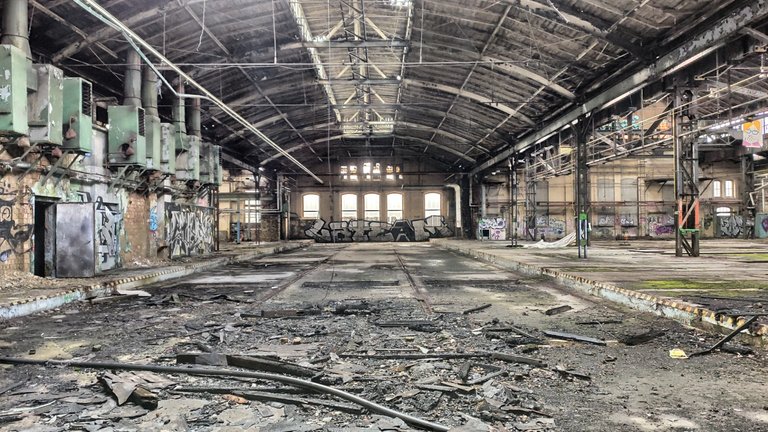
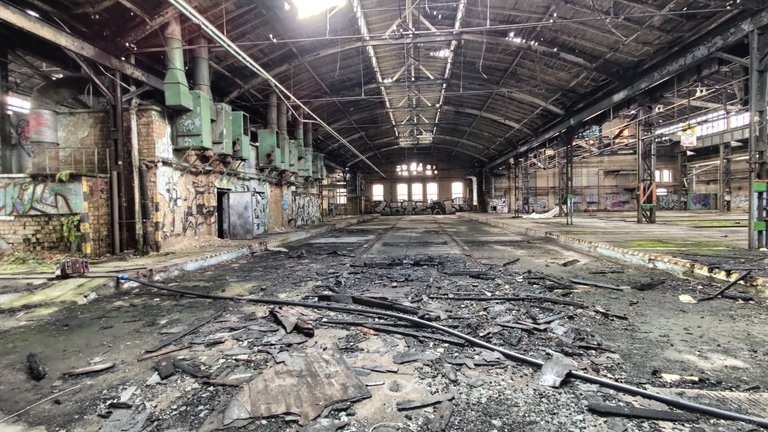
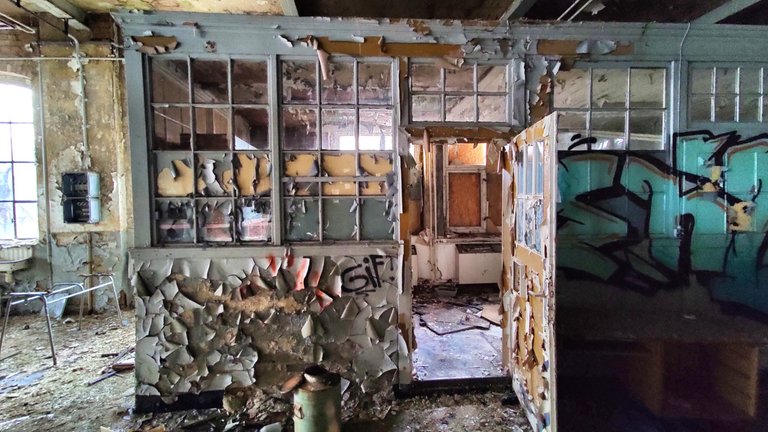
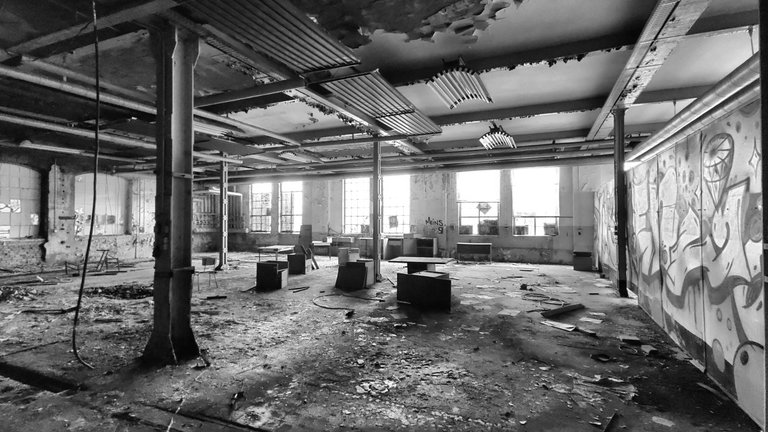
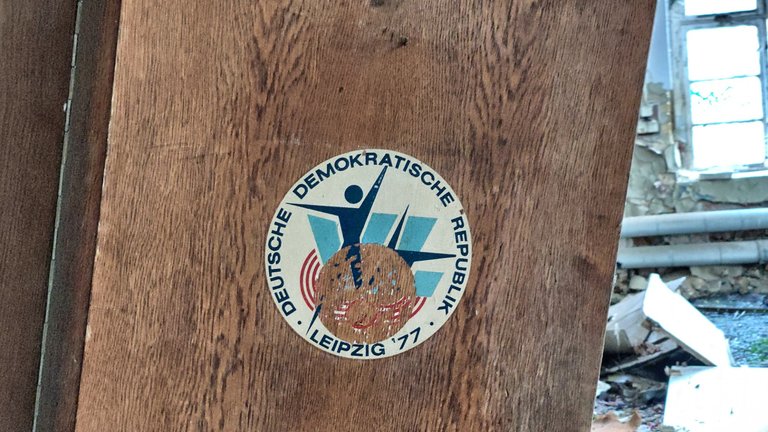
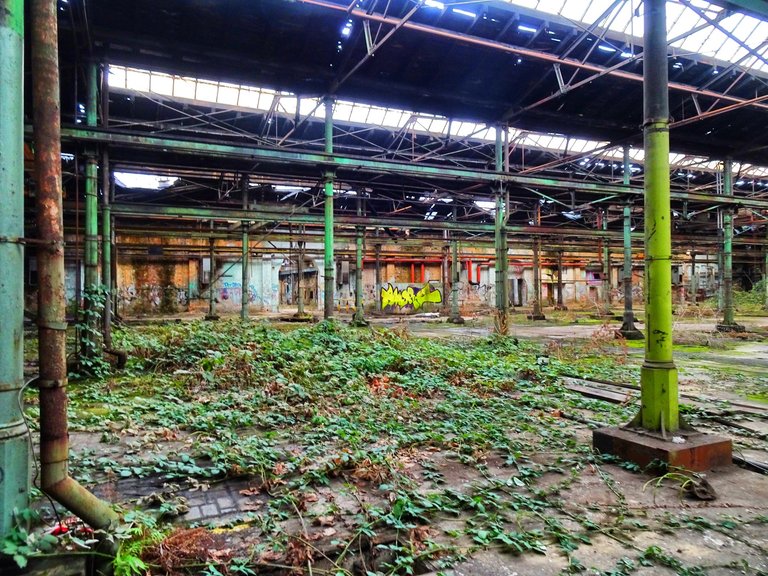
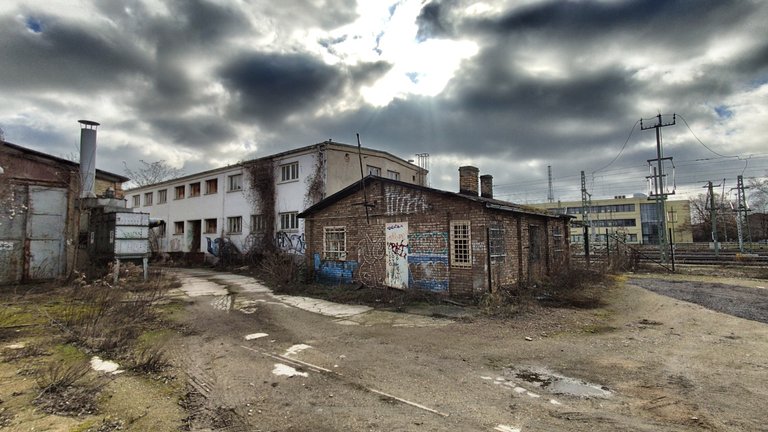
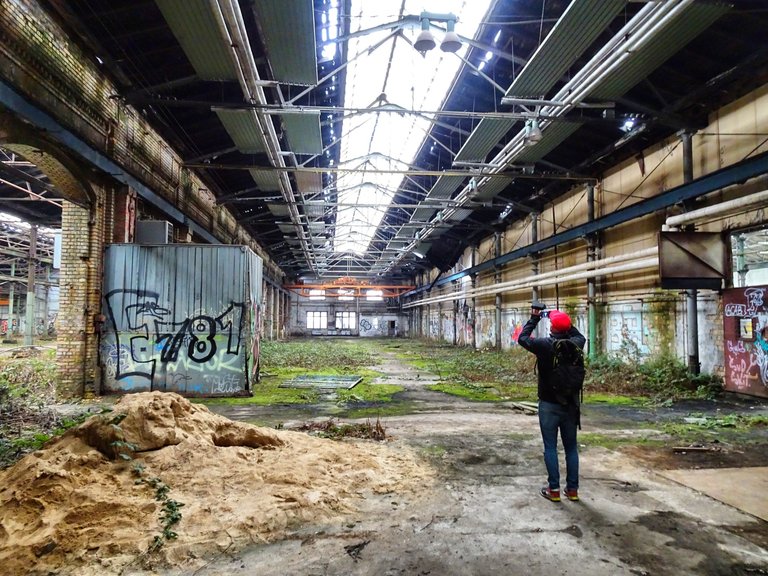
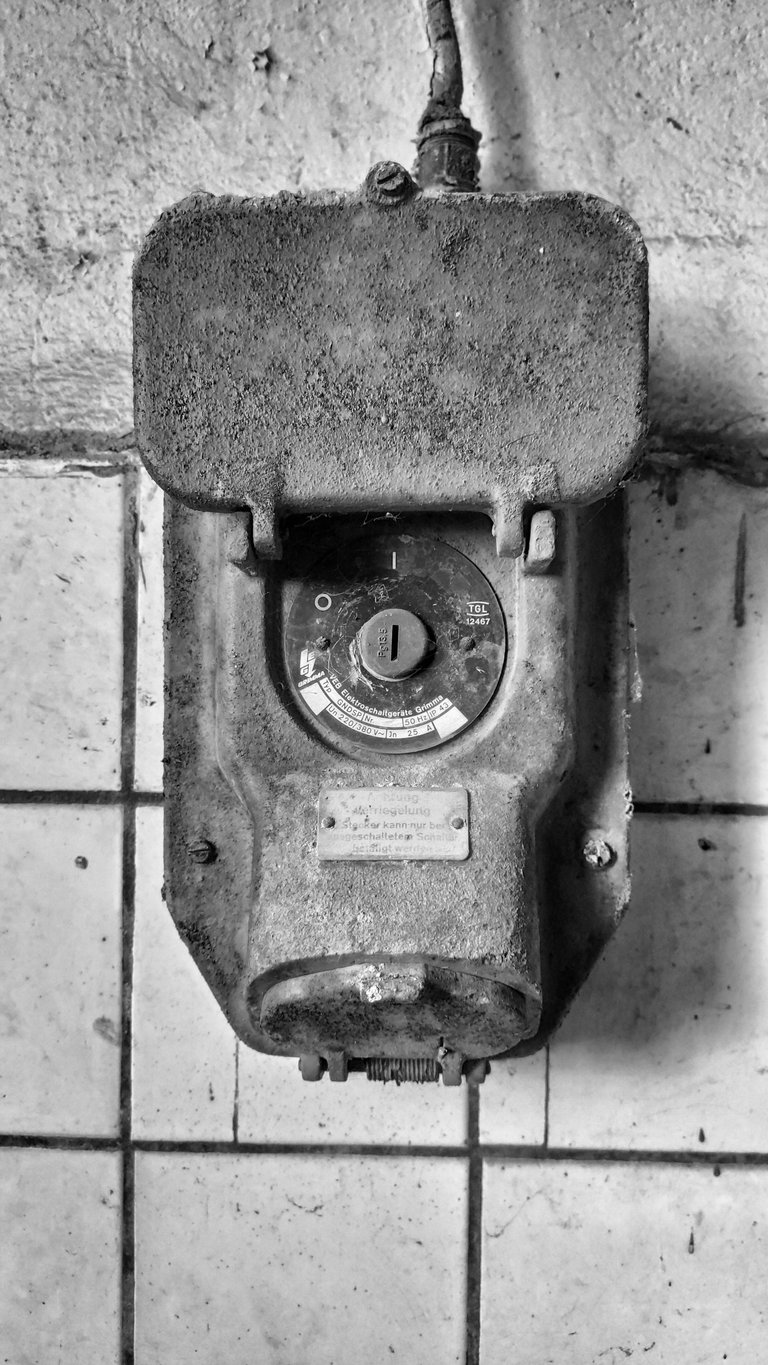
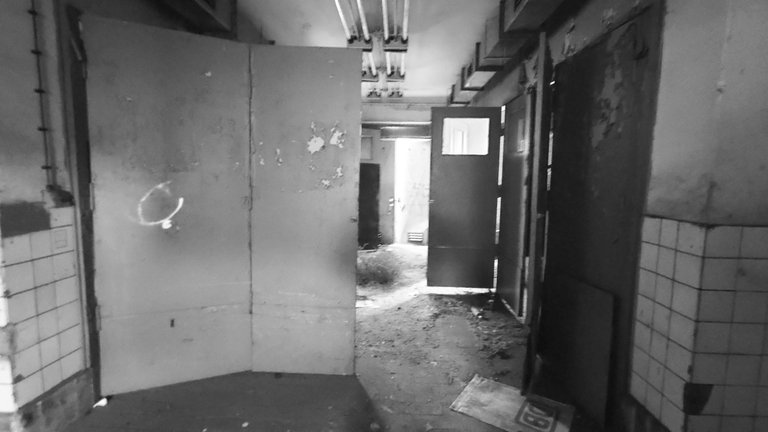
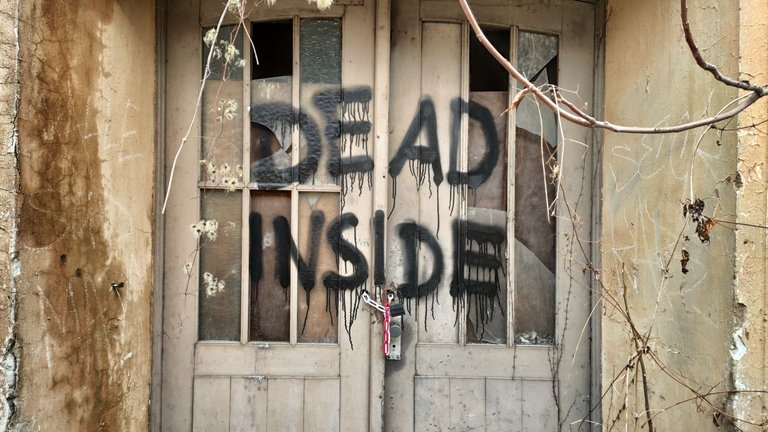
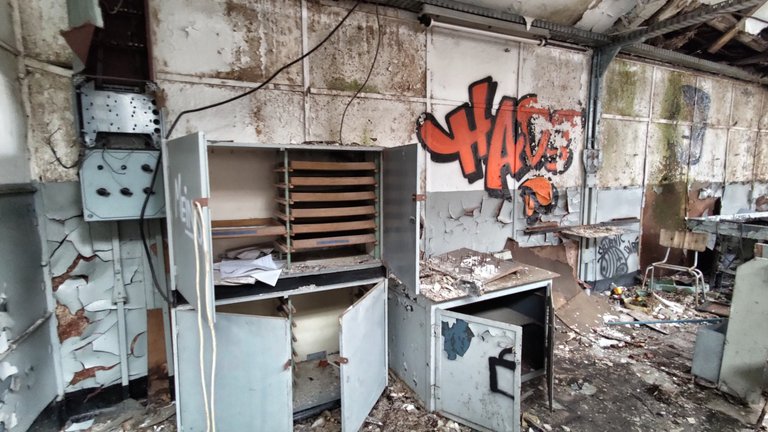
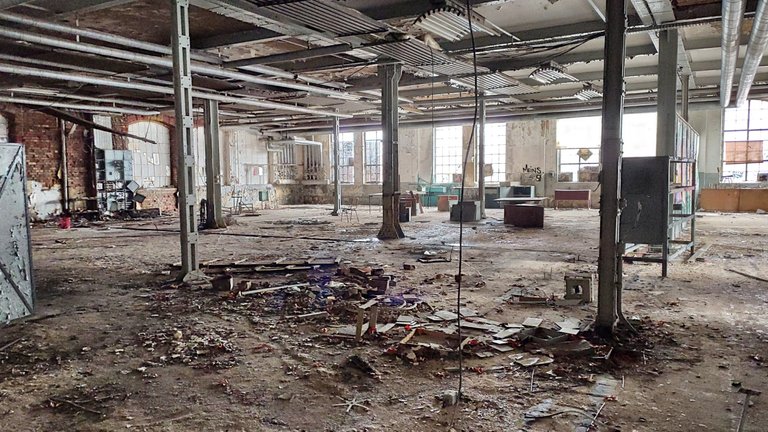
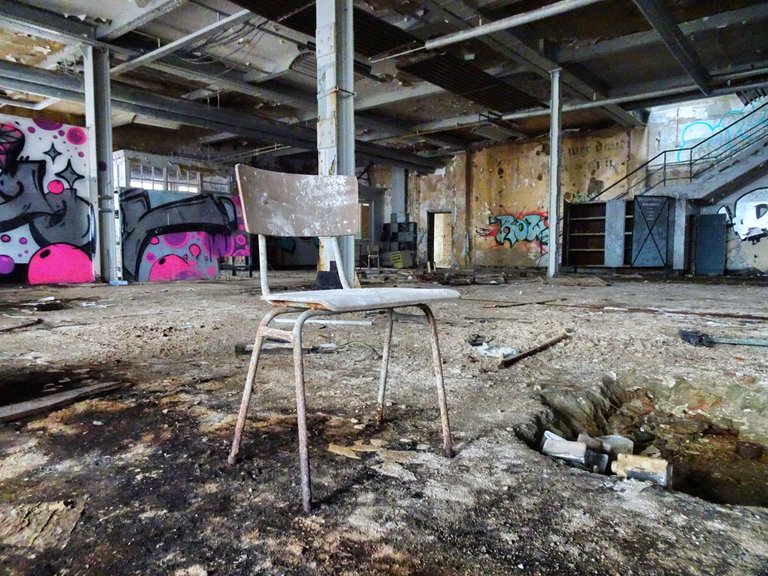
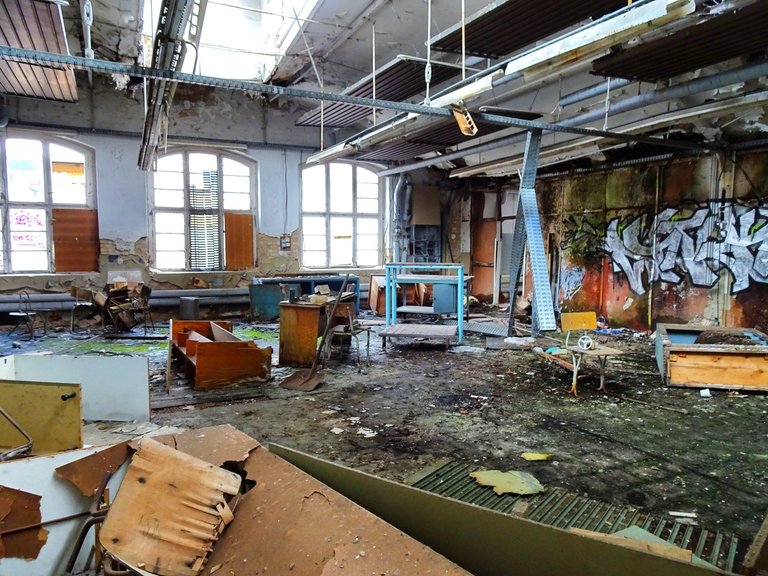
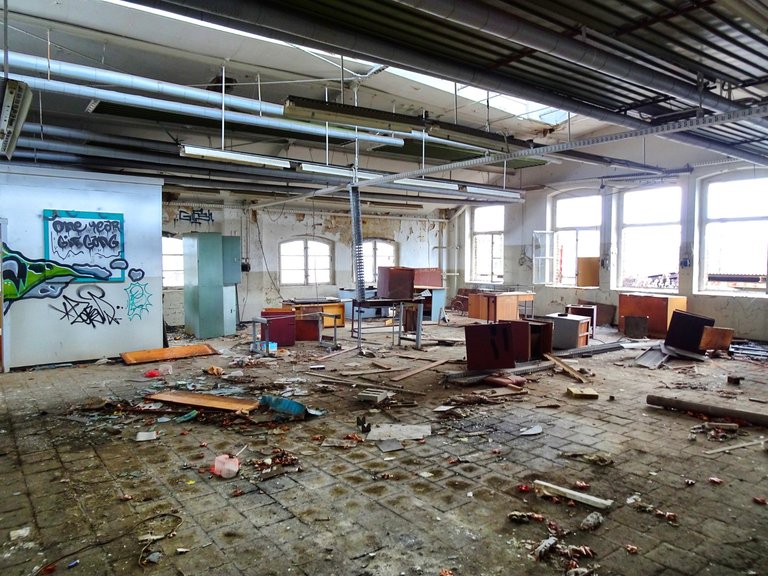
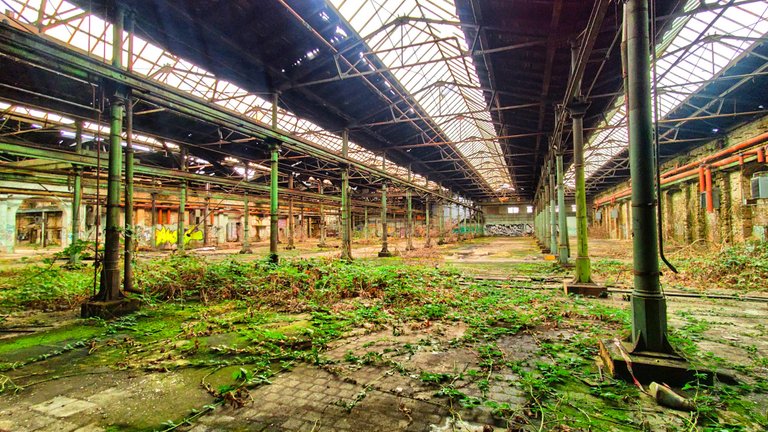
You can check out this post and your own profile on the map. Be part of the Worldmappin Community and join our Discord Channel to get in touch with other travelers, ask questions or just be updated on our latest features.
Congratulations, your post has been added to the TravelFeed Map! 🎉🥳🌴
Did you know you have your own profile map?
And every post has their own map too!
Want to have your post on the map too?
- Go to TravelFeed Map
- Click the create pin button
- Drag the marker to where your post should be. Zoom in if needed or use the search bar (top right).
- Copy and paste the generated code in your post (any Hive frontend)
- Or login with Hive Keychain or Hivesigner and click "create post" to post to Hive directly from TravelFeed
- Congrats, your post is now on the map!
PS: You can import your previous Pinmapple posts to the TravelFeed map.Opt Out
Congratulations @koenau! You received the biggest smile and some love from TravelFeed! Keep up the amazing blog. 😍 Your post was also chosen as top pick of the day and is now featured on the TravelFeed front page.
Thanks for using TravelFeed!
@for91days (TravelFeed team)
PS: Have you joined our Discord yet? This is where over 1000 members of the TravelFeed come together to chat. Join us!
https://www.reddit.com/r/urbanexploration/comments/1lshqf6/they_call_it_the_reichsbahn_repair_shop_and_its/
This post has been shared on Reddit by @yale95reyra through the HivePosh initiative.
Thanks a lot!
Es increible. Me ha parecido super hermoso e interesante.
I don't know how, but you took abandoned places and sparked light with your photography. Just seeing those pictures makes the mind pleasant.